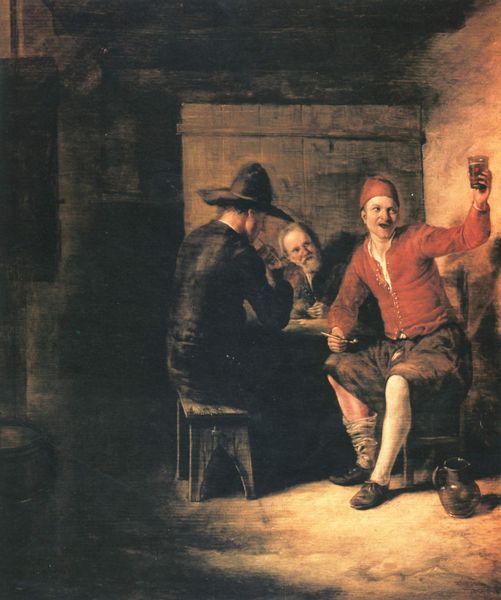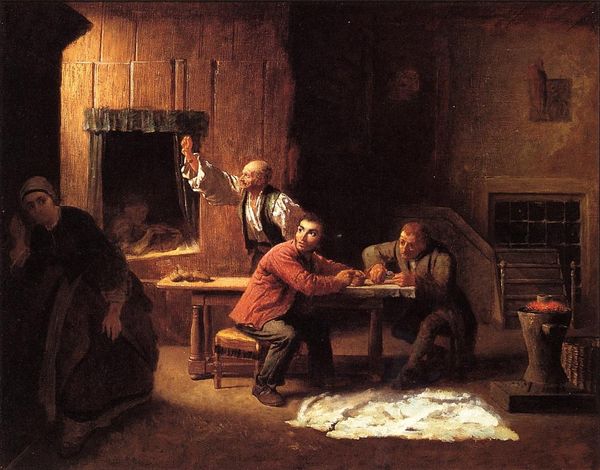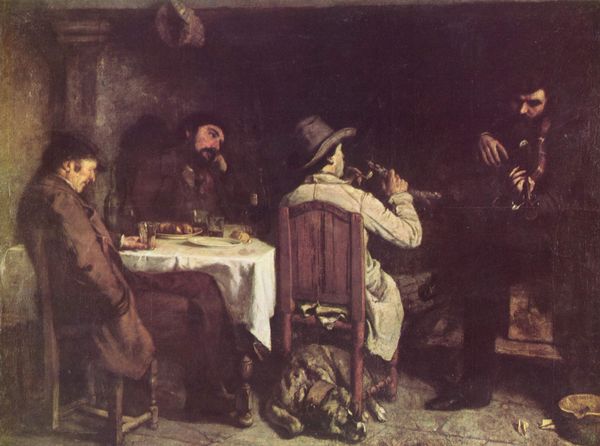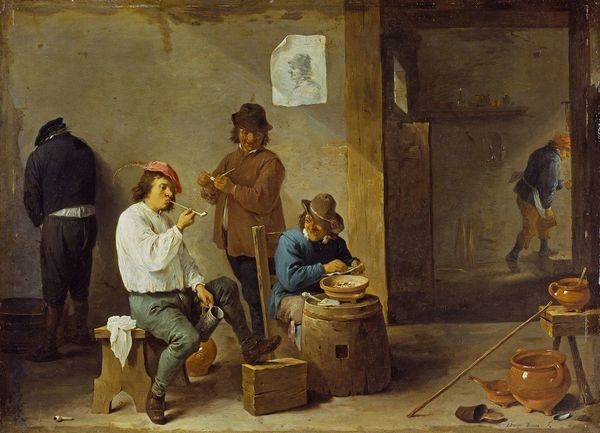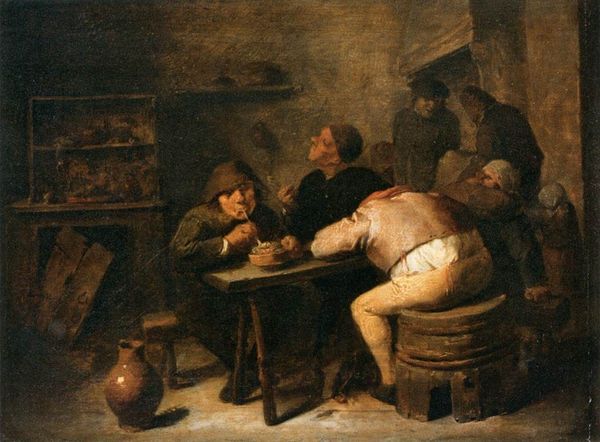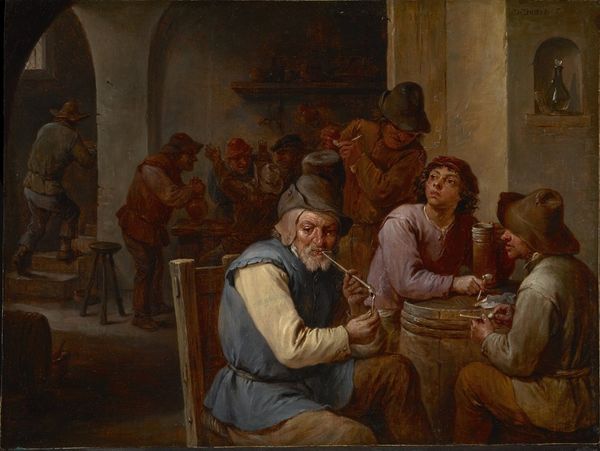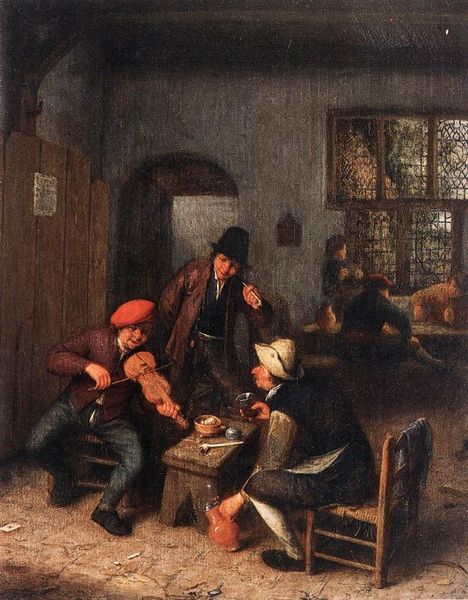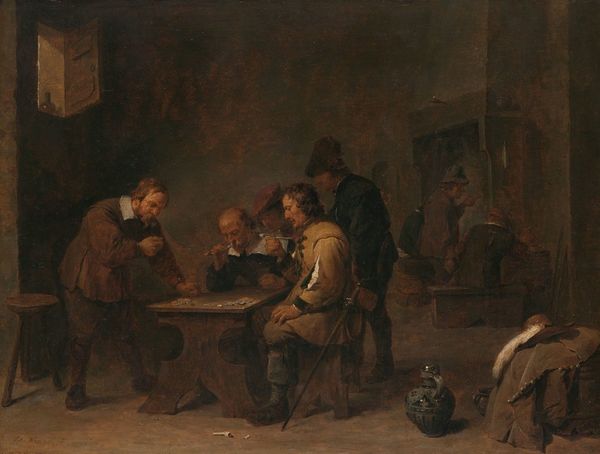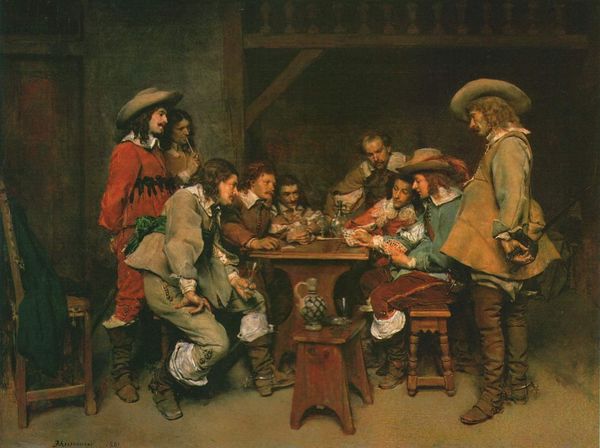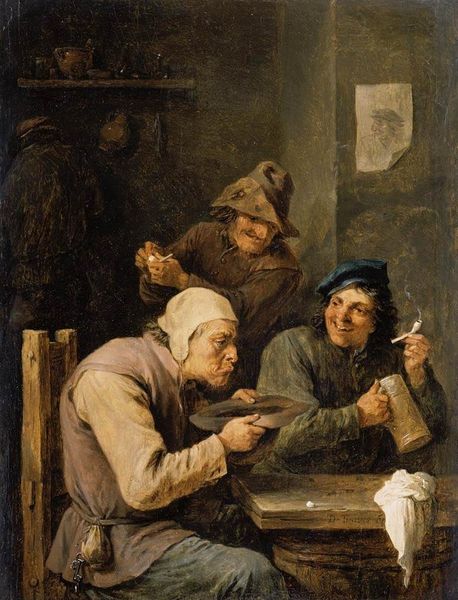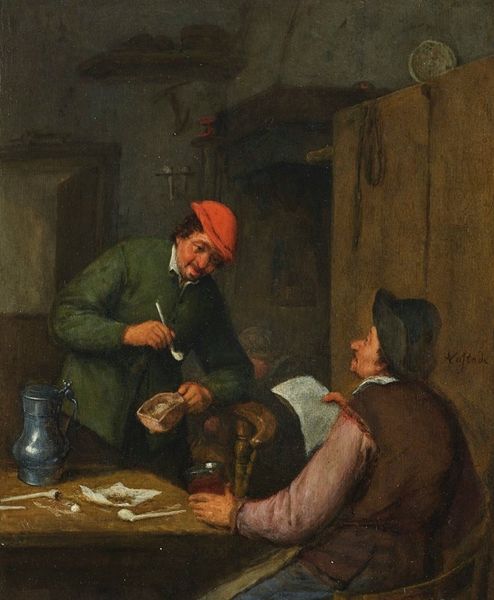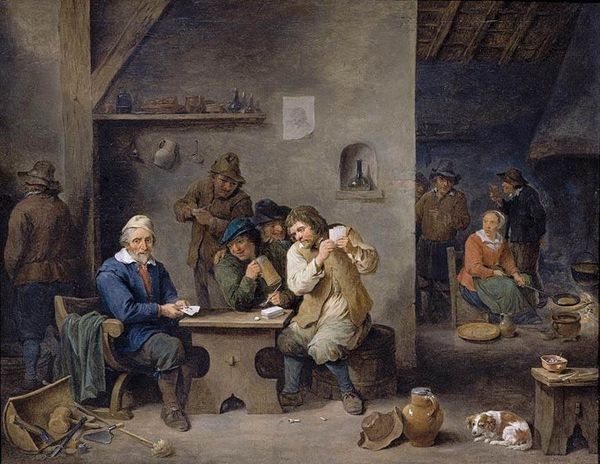
painting, oil-paint
#
portrait
#
portrait
#
painting
#
oil-paint
#
group-portraits
#
genre-painting
#
realism
Copyright: Public domain
Editor: We're looking at Eastman Johnson's "The Card Players," painted in 1853 with oil on canvas. It's quite a charming scene. I'm curious, what story do you think Johnson is trying to tell through this genre painting? Curator: That's a good place to start. This image tells us much about the cultural activities taking place in that period. Johnson, like many artists of his time, sought to portray everyday life. How do you think social class influences our understanding of this painting? Editor: Hmm, well the setting looks humble, maybe a bit rundown. So, are we meant to see this as a glimpse into the lives of the working class, engaging in leisure? Curator: Precisely. And how does Johnson use realism to either challenge or reinforce the perception of these groups by the audience viewing the work? Is this celebratory or critical, do you think? Editor: I see it as rather respectful. He isn’t romanticizing the scene, but presenting it honestly. There is even a young girl with worn-out clothes; do you think the presence of the child is a means of conveying some hidden aspect about these characters? Curator: It certainly is, a juxtaposition that highlights their everyday conditions. Eastman Johnson brings the viewer to interact and consider this representation. What do you feel Johnson communicates about America in 1853? Editor: He captures the different strata of American society, moving away from only depicting elites to embracing diverse social segments. Curator: That’s a very important and relevant reading, this focus emphasizes how art creates our sense of history and national identity. Editor: Definitely gives a broader understanding, doesn't it? It all gives us a new perspective and better context of 1850's America.
Comments
No comments
Be the first to comment and join the conversation on the ultimate creative platform.
